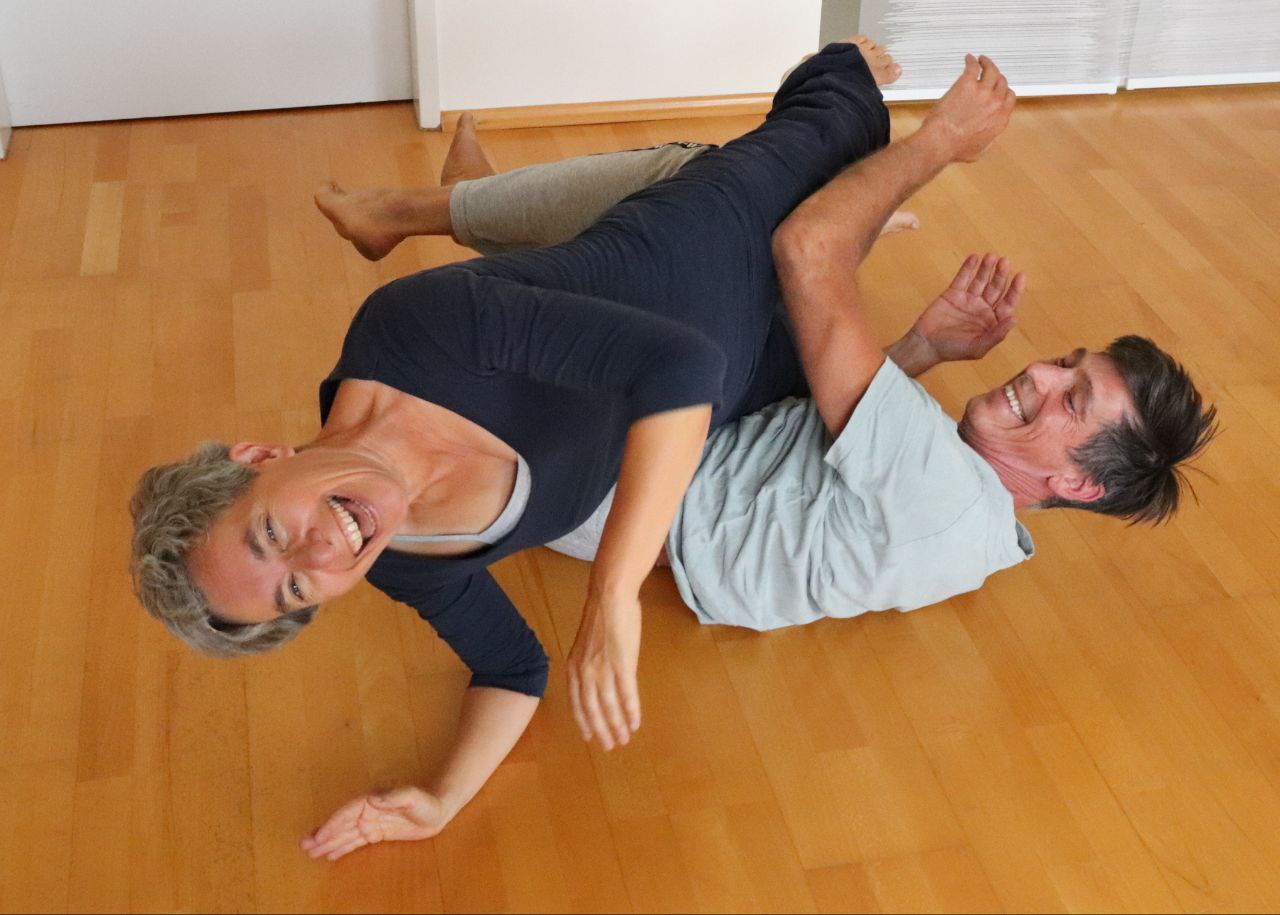Teachers and Classes
This year, we're thrilled to announce that the headliner of our 7th festival will be the legendary Daniel Lepkoff, one of the pioneers of Contact Improvisation! To honor this special opportunity, we've extended the festival to a full 8 days of immersive CI dancing and exploration.
You will find all teachers who will share their experience during the festival on this page.
Daniel Lepkoff
PHYSICAL DIALOGUES:
EXPERIMENTS IN COMMUNICATION THROUGH MOVEMENT
a dance technique and approach to movement researchdeveloped by: Daniel Lepkoff
Our living physical interactions with the environment are expressions of our desires, imagination, and intelligence. We frame this spontaneous material as "danced composition".
Addressing all our physical senses, we explore of the details inside of functional movement: breathing, rolling, reaching, crawling, standing, walking, running.....
Practicing:
-OBSERVATION
-THE MOVEMENT OF ATTENTION
-RECEIVING INSTRUCTIONS FROM THE ENVIRONMENT.
lead us, as dancers, to experience being a transmitter of questions rather than the maker of images.
Open talk/lecture
TITLE: "Is the Small Dance Improvised?"
Daniel will speak briefly of his understanding of Contact Improvisation as a practice and performance action designed to display the reflexive movement of the human animal as "danced composition". He will briefly describe his work of over 50 years researching functional movement as a medium for making performance and an alternate vision of "dance" technique.
His presentation will be short, so most of the time can be for fielding question from festival participants, hopefully beginning a conversation, learning about each other and our various ideas about movement, performance, practice, and Contact Improvisation.
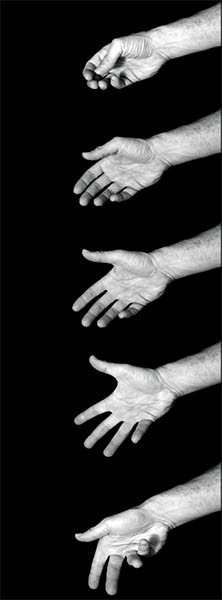
Biography
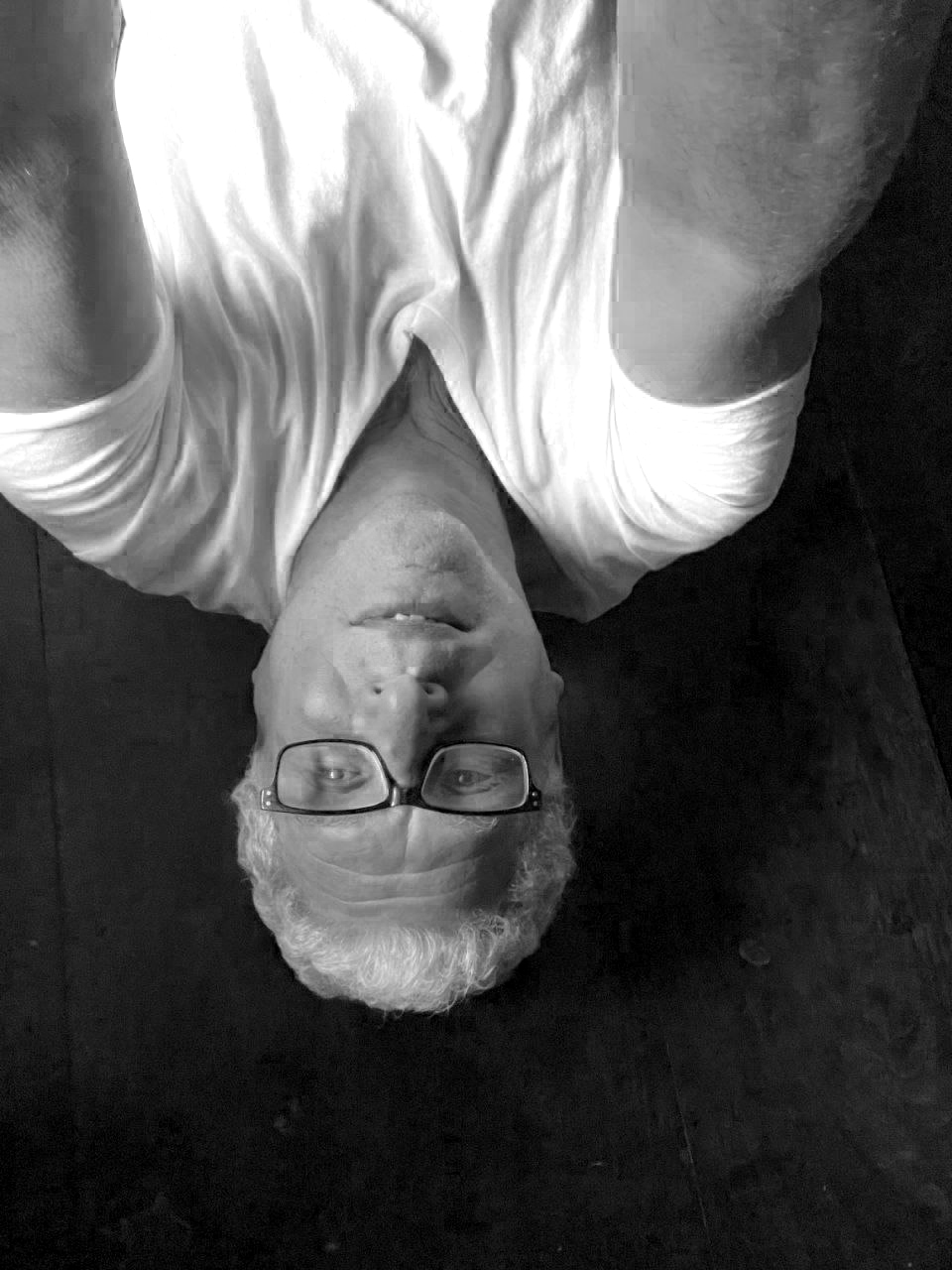
DANIEL LEPKOFF is a dancer known for bringing the process of living movement into the studio and onto the stage.
Since the early '70's he played a central role in the development of Release Technique with Mary Fulkerson and Contact Improvisation with Steve Paxton. Throughout the '70's and '80's he traveled extensively; teaching, performing and exposing these new ideas worldwide.
He was one of the founders of Movement Research in NYC (1975), playing as active role in defining the initial conception of this seminal organization: designing new programs, curating events, teaching regular classes and offering intensive workshops.
Living in New York City in the '80's Daniel performed in the works of several choreographers including: Trisha Brown, Simone Forti, Mary Fulkerson, Lisa Nelson, Mary Overlie, Judy Padow, Steve Paxton, & Nancy Topf. In this period his own movement based solo and group work experimented with the elements of voice, text, film, video, & photography, and interactions with physical objects. His work has been shown at Danspace, PS122, Movement Researh at Jusdon Church, in New York City as well as internationally throughout Europe, Eastern Europe and Russia, and South America.
Over the years Daniel has engaged in several long term and important collaborations with other performing artists including: Lisa Nelson, Steve Paxton; Paul Langland, Saira Blanche Theater in Moscow (Oleg Soulimenko and Andrej Andrianov), Hungarian experimental musician Dora Attila and Japanese dancer, Sakura Shimada, among others.
In 2002, working with Mira Kovarva and The Bratislava in Movement Festival Daniel was the artistic director of ' Rozhovory tiel / Physical Dialogues' a seminal artistic/educational event that brought a cross section of mature and developed approaches to improvisation.
He has published numerous articles articulating concepts that are central to his approach to dance making. These writings appear in Contact Quarterly, The MR Performance Journal, and Contredanse Publications in Bruxelles, and on his website: www.daniellepkoff.com
He lives on a piece of land in Vermont.
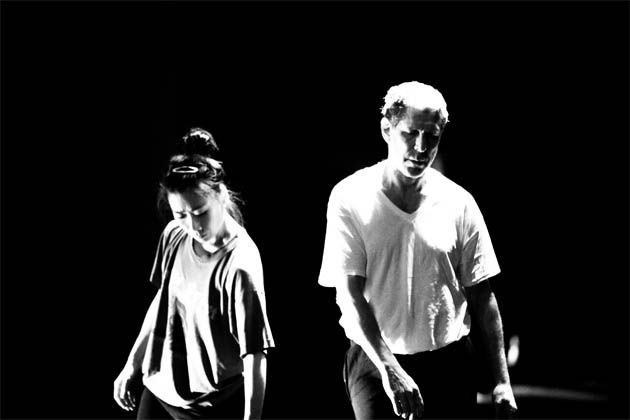
Giorgia Livan
"MARKER: BODYGRAPHY ON THE FLOOR WALL"
How can bodies and surfaces be marked by intentional or unintentional actions?
How do ensembles change composition? And how do solos flourish during these markings?
Through the practice of marking, we will analyse and experience from a scientific as well as an artistic point of view (combining different techniques) the concept of marking in solo dance and in the practice of Ensemble Contact Improvisation. Thanks to these marks, we will translate into space an exploration that is guided at first and spontaneous at a later stage.
The focus will be on the awareness of how these mnemonic and material scars influence the environment of practice and the relationships created in it.
MORE ABOUT THE PROCESS:
The process will be marked in a dialogue between pauses and translation on paper and movement.
The dance will be both ensemble and solo in order to observe the difference of moving from a complex organ such as being in a group and collectivity to returning to oneself with the wake of the marks left by others.
It is not necessary to be a visual artist, this is a device for dancers (especially in the dynamics of Contact Improvisation) to make the intuitive choice that the body feels resurface.
We will work with simplicity and synthesis, taking away rather than adding and without acting automatically and compulsively in flying or falling.
We will also have the pleasure of crossing the perspective of our map directly on the wall, after travelling from the floor.
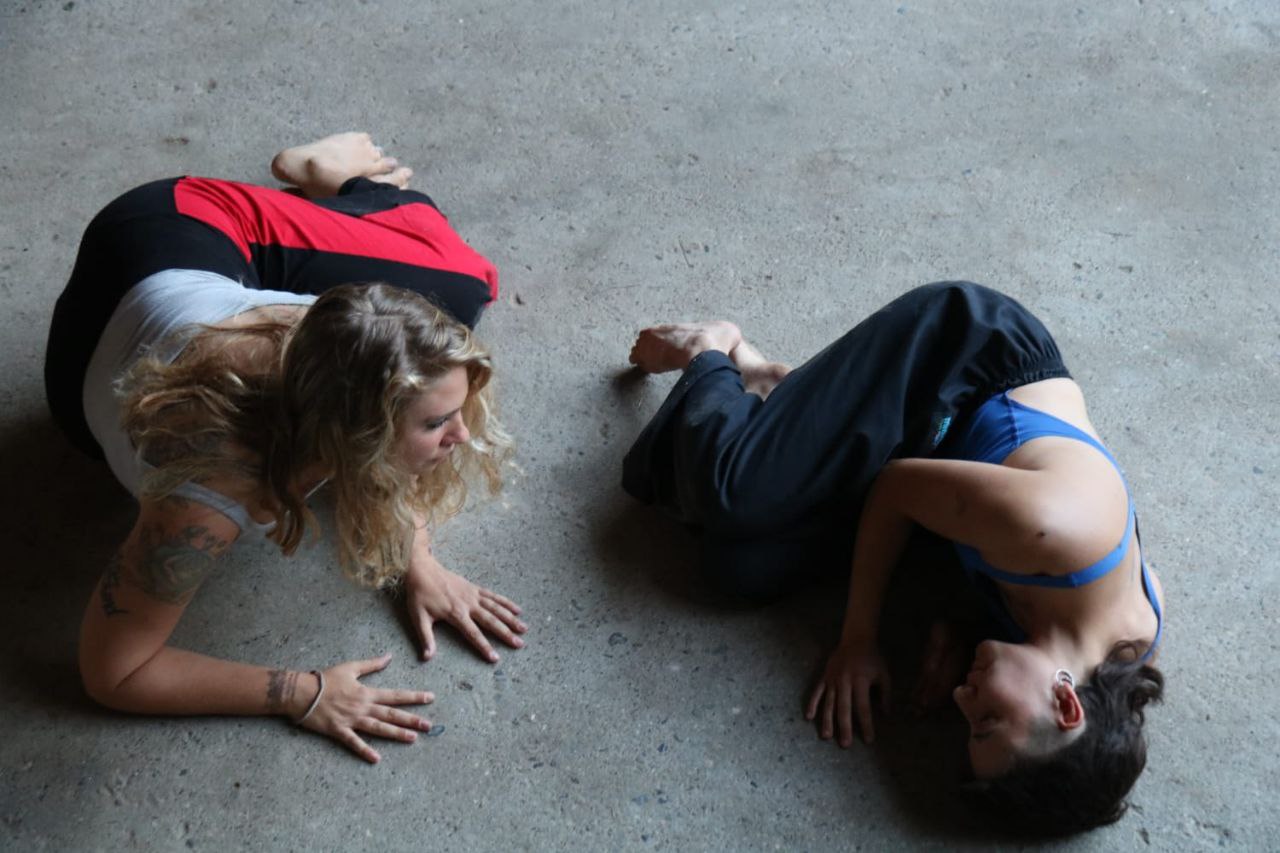
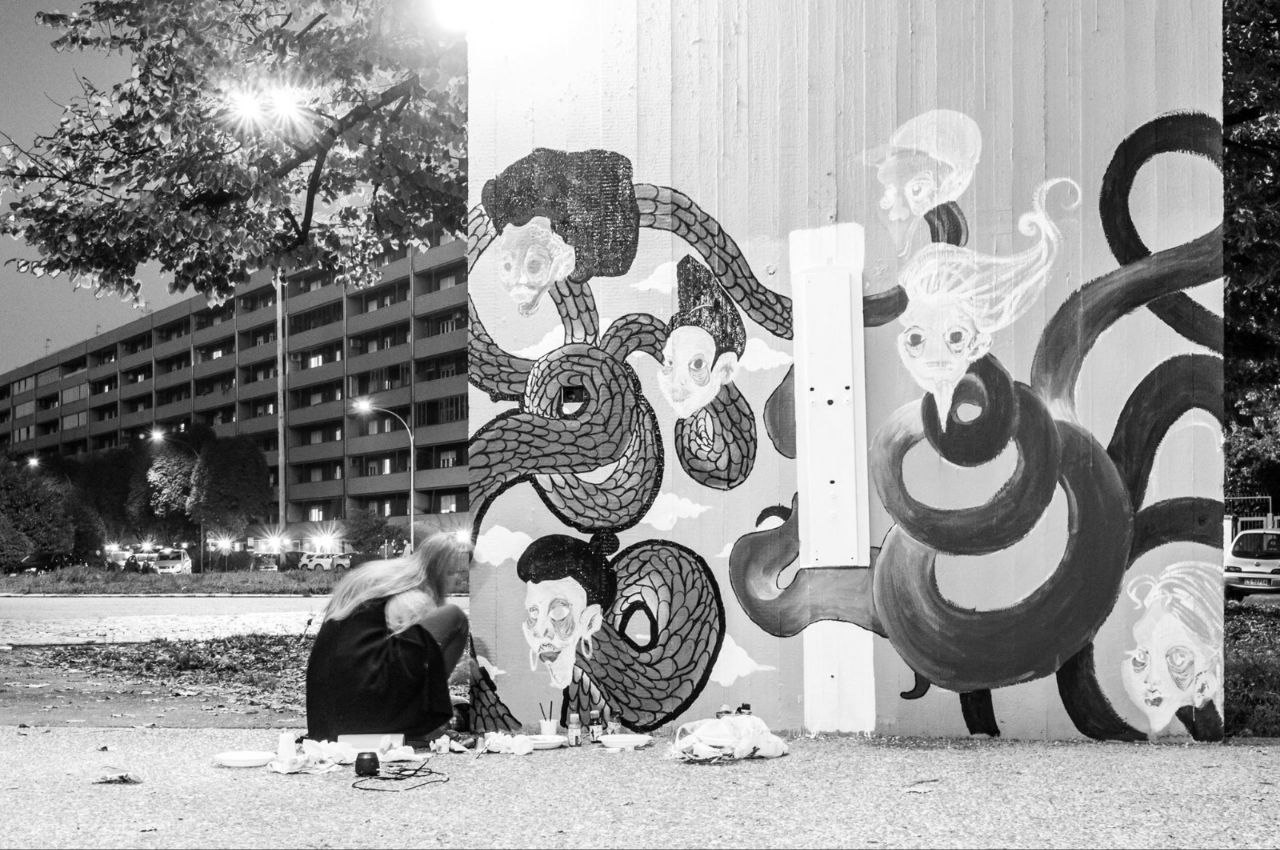
Biography
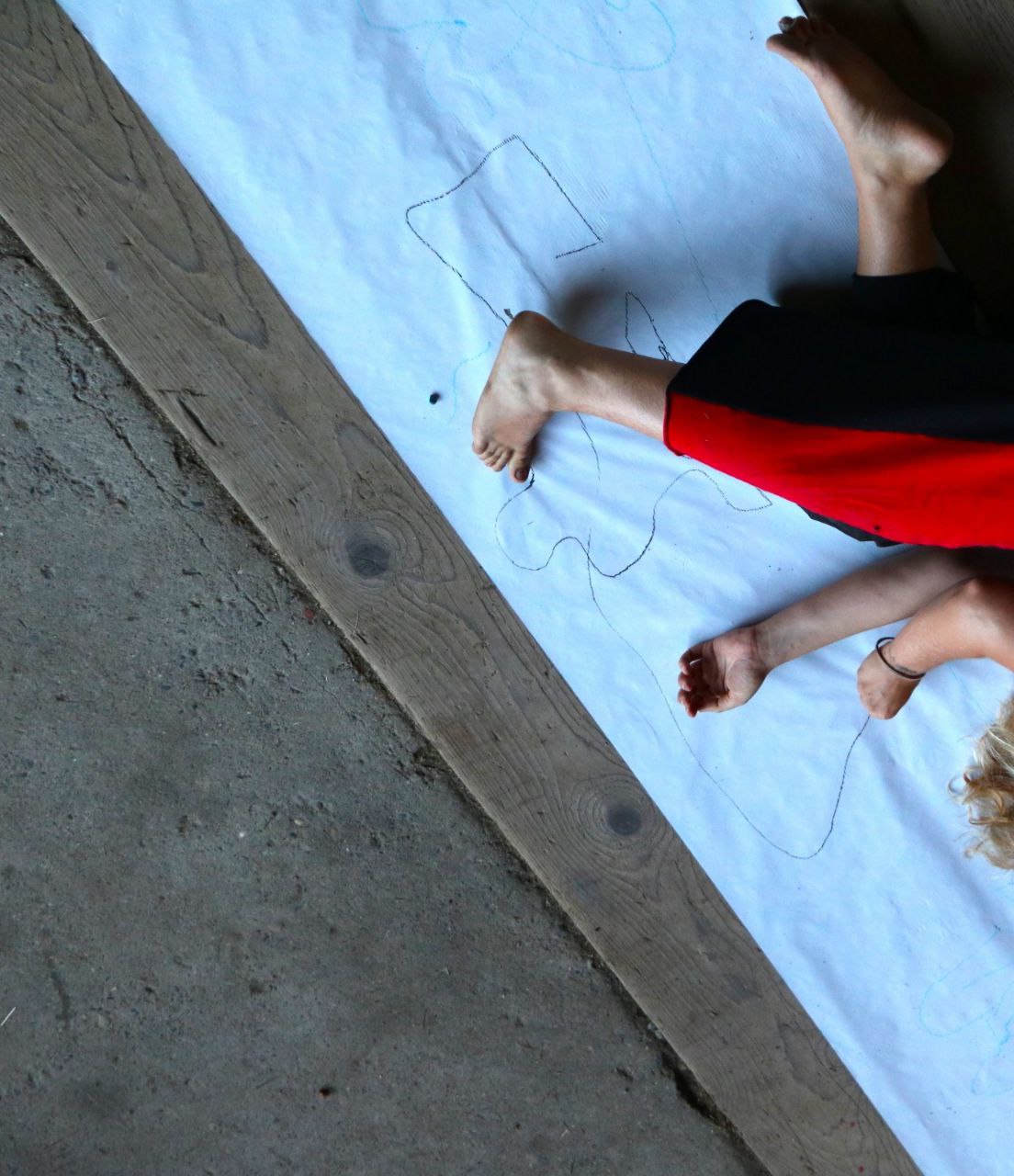
Biological (rather than biographical) human being, I have known movement through walking on the floor, taking trains, transport and training in contemporary dance academies since I was a child.
At the same time, music, drawing and natural sciences have always supported these movements in an organic way. I have also published research in the field of improvisation, which is still part of what I investigate daily and for creative work.
As an artist, the lens through which I observe and touch the ground comes from streetart and streetdance with which I grew up in all ages of life as a second home, both abroad and in my home country. This background of many years within the disciplines of Cypher and Freestyle in big cities and industrial fringe areas, evolved in a natural way also in less anthropic areas; Landing closer to the sensibility that captures my interest around 2015, through the knowledge of Contact Improvisation and Dance Theatre especially in the space of Jam and Performance all over Europe and outside Europe (Africa, USA, France, Germany, Hungary, Austria, Switzerland, etc.)
I have studied a lot with many teachers and artists in both music and dance and I am constantly learning and studying in the creation of collaborations and projects in many different forms.
Recognising that my gaze falls especially on impressions and the dialogue between composition and signs, allows me to witness how this can create both in social hierarchies and in performance spaces an impactful change.
Moving away from expressive egos and narcissistic personalities, moving closer to the rhythm of simplification in counterpoint to the historicity of our time, is developing a different way of connecting bodies.
Starting from the traditional pattern and deconstructing it.
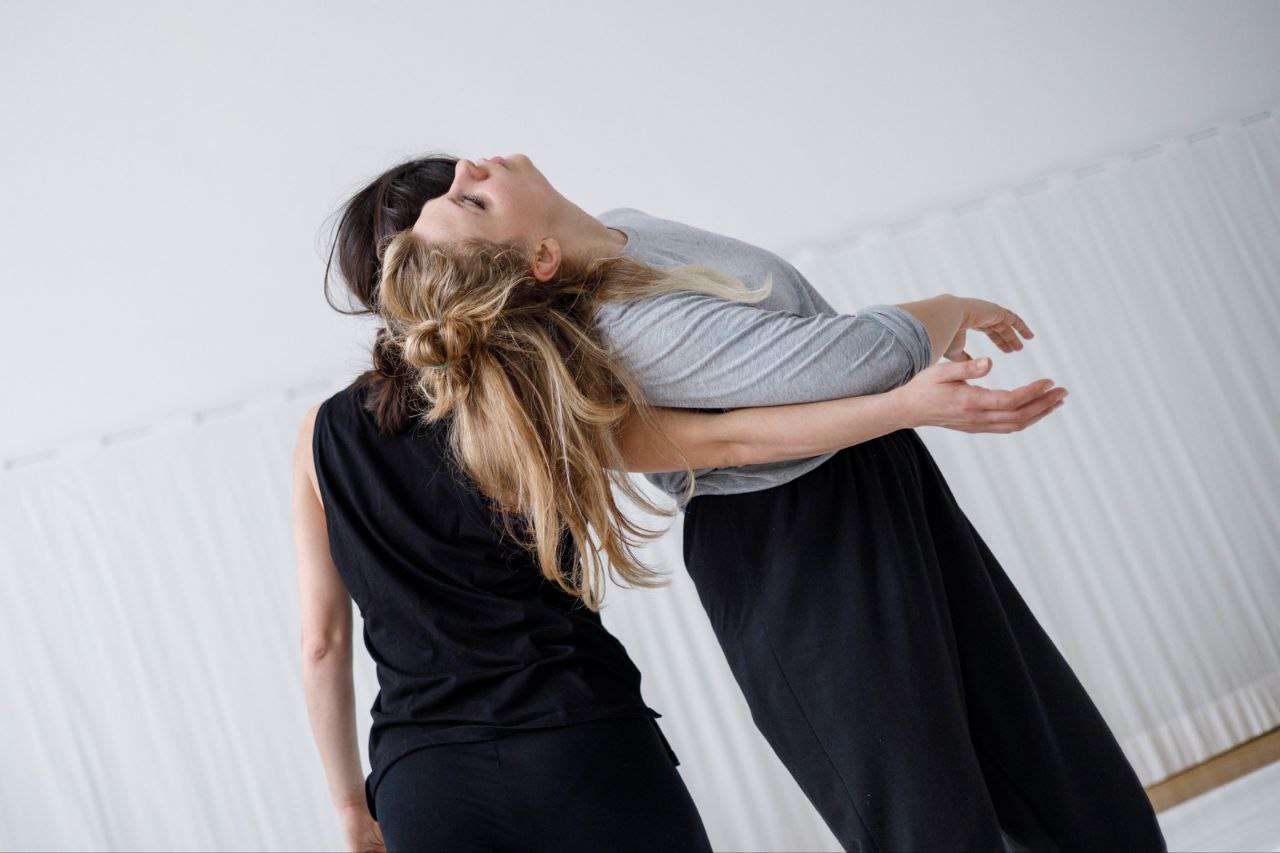
Pedro Penuela
Supportive architectures in the body
In these two classes we will work on skills, techniques and forms that help us to access a sense and experience of support. This aims to bring safety in motion and to open a wide range of movement possibilities that can be investigated and explored during an improvisation, especially in situations of weight exchange.
To develop it, we'll focus on:
. Sensing, knowing and experimenting with and from our skeleton,
. Dynamic alignments and embodied understanding of our supports and ways to offer support,
. Tuning to the reflex intelligence in our own body and in the others',
. Feeling and playing with gravity and action-reaction interplay with the ground,
. Pathways to connect the whole body and to feel its different architectures in each moment,
. Forms that teach the body important skills when "flying",
. Feeling and getting awareness of the center of gravity and it's role in CI,
. Use of momentum, leverages and centripetal forces.
Lecture with Pedro: "The political relevance of some principles of Contact Improvisation"
The lecture will discuss ethical and political implications that characterize Contact Improvisation, highlighting the relevance of some of its principles, such as:
1. The dilation of time and the stretching of perception,
2. The question of resistance (or the resistance under question),
3. The rupture with the imperative of productivity,
4. The (open) question of community, collective bonds and spaces of "refuge".
By examining these aspects, we highlight how this dance form subverts the hegemonic cultural imperatives of accelerating action, densifying stimulation and increasing productivity, as well as it helps us to problematize the notion of resistance and the strategies of political and cultural opposition to a status quo, thus having the potential to create particular spaces of sharing, articulated by commonalities in perception and sensitivity.
Public talk and discussion with Pedro Penuela: "The transformative power of Contact Improvisation"
Contact Improvisation can be considered a very transformative practice to those who experience it. Elements like: the complexity of touch and communication through touch, sensing gravity and weight in very subtle levels, opening the periferal vision and a spherical sense of space, dealing with disorientation and finding balance and calm in adrenalized states and situations of risk, among many other aspects of this practice have the potential to deeply reshape our perception and the way we experience our bodies in general. Moreover, it can have deep emotional, social and political implications too. In this circle our intention is to share reflections, thoughts and experiences from all of us participants about the transformative powers of CI and what aspects of this dance form do we think we should or should not activate, deepen, question, increase, improve, change, maintain etc...
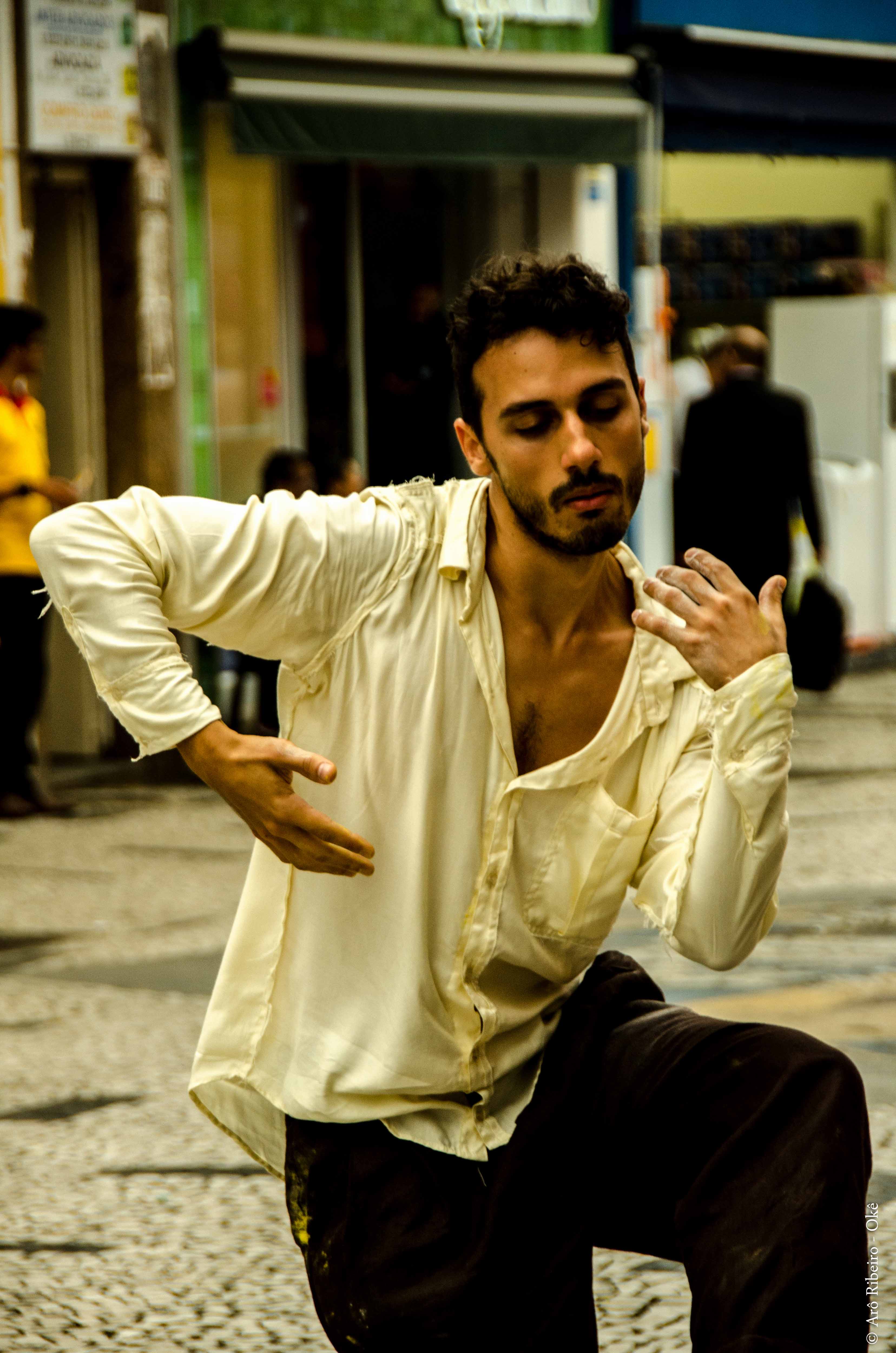
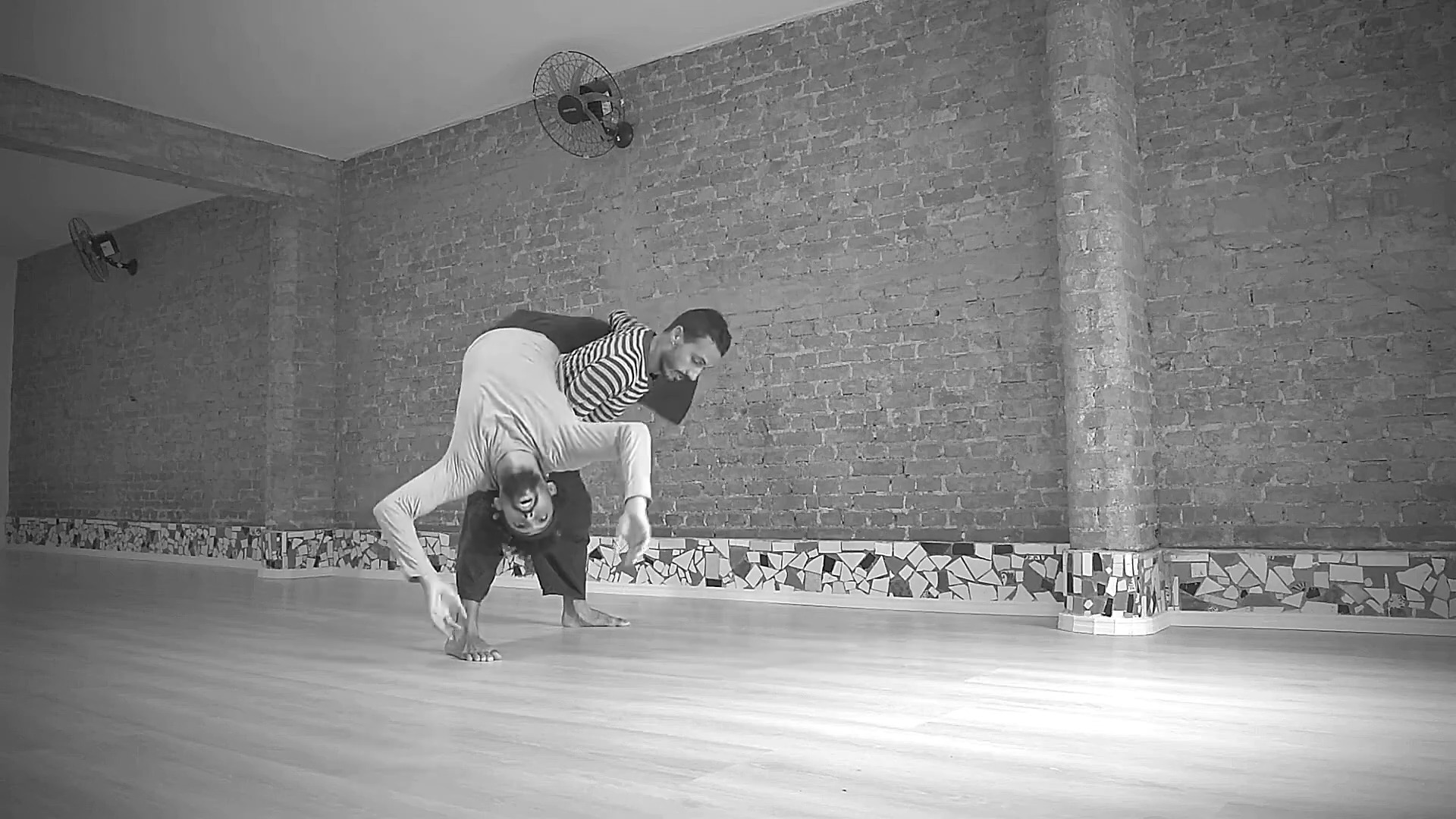
Biography
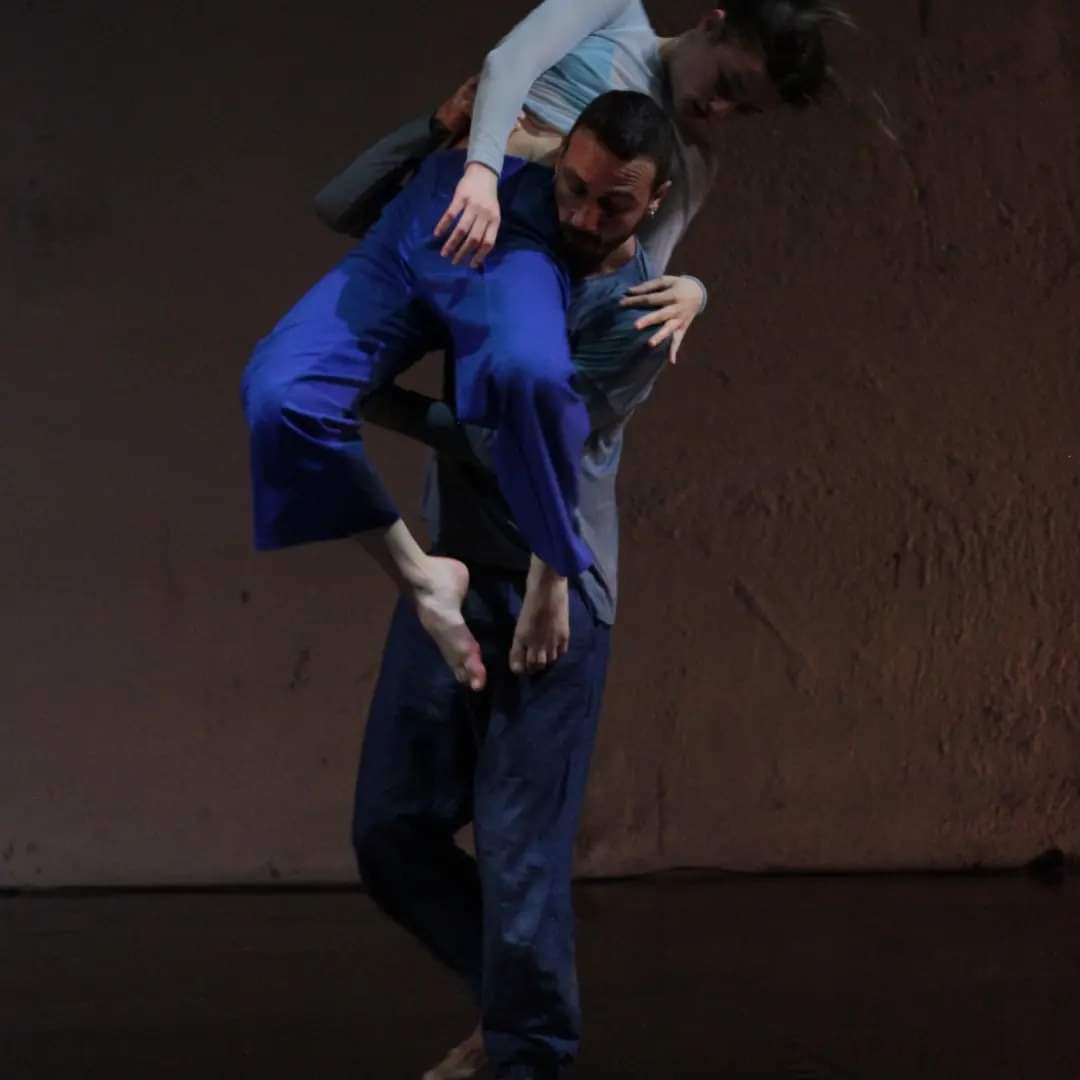
Pedro Penuela is a dancer, psychologist and PhD in performing arts from Brazil, now living in Greece. In his PhD he researched forms of presence in the works of Steve Paxton, Pina Bausch and Kazuo Ohno, having had the opportunity of interviewing Paxton twice. He has been dancing and practicing Contact Improvisation since 2006, having studied with many different teachers such as Nita Little, Ray Chung, Daniel Lepkoff, Otto Ramstad, Lisa Nelson, and many others from different countries. Pedro has given workshops and classes in Brazil, Argentina, Spain, Italy, Greece, Israel/Palestine, France.
In 2024 he was also a member of the curating team of ECITE (European Contact Improvisation Teacher's Exchange).
Website: pedropenuelaeng.wordpress.com
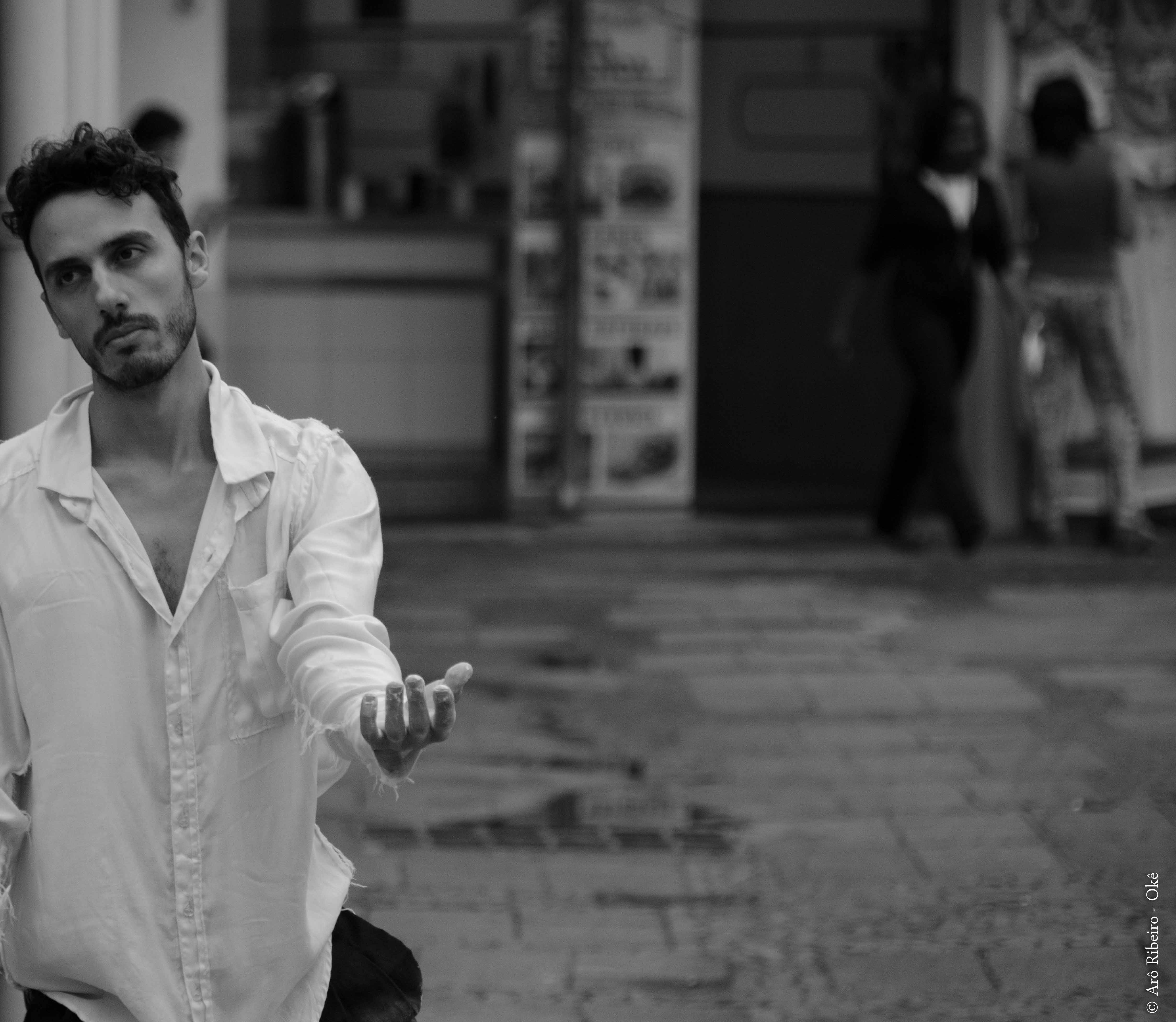
Valeria Chan
THE POETRY OF GRAVITY
Gravity, the most invisible yet ever-present universal force, it never abandons us. It surrounds us in silence, constant and unwavering, a quiet companion that holds us in its embrace, always. It does not discriminate; it treats every body, every object, every movement with the same gentle persistence. In this way, gravity is a great equalizer—a silent, democratic presence that unites us through its constant embrace.
As Steve Paxton observed: "We are born into gravity, and from that moment, gravity becomes part of our movement, our being, our dance."
It is an invitation to explore gravity not just as a physical principle, but as a partner in movement. Gravity is like an invisible rain, always present, or like the wind, constantly flowing through and around us. It is the source of balance, motion, and stillness. To dance is to let these unseen forces move through us while simultaneously asking them to support and shape our movement.
During the workshop, we will explore the idea that flight begins with a state of falling and surrender to gravity. To fly is to fall with purpose and trust, using the kinetic energy of the fall to lift us effortlessly into space. It is through the grace of surrendering to gravity that we find the flow of flight. We will engage with the small dance, the micro-movements of stillness that emerge as we connect with gravity. This foundation will guide us into larger movements, including lifts and flights, as we let gravity and weight shape our improvisation in solo, duets, trios, and group dances.
How can we fall softly, only to rise and fly just as gently? What role does breath play in both falling and flying? What is the difference between surrendering and collapsing? What does it mean to dance, to fly, and to continuously fall while lifting others?
To breath, to fall, to fly: let us embrace and being embraced by the poetry of gravity.
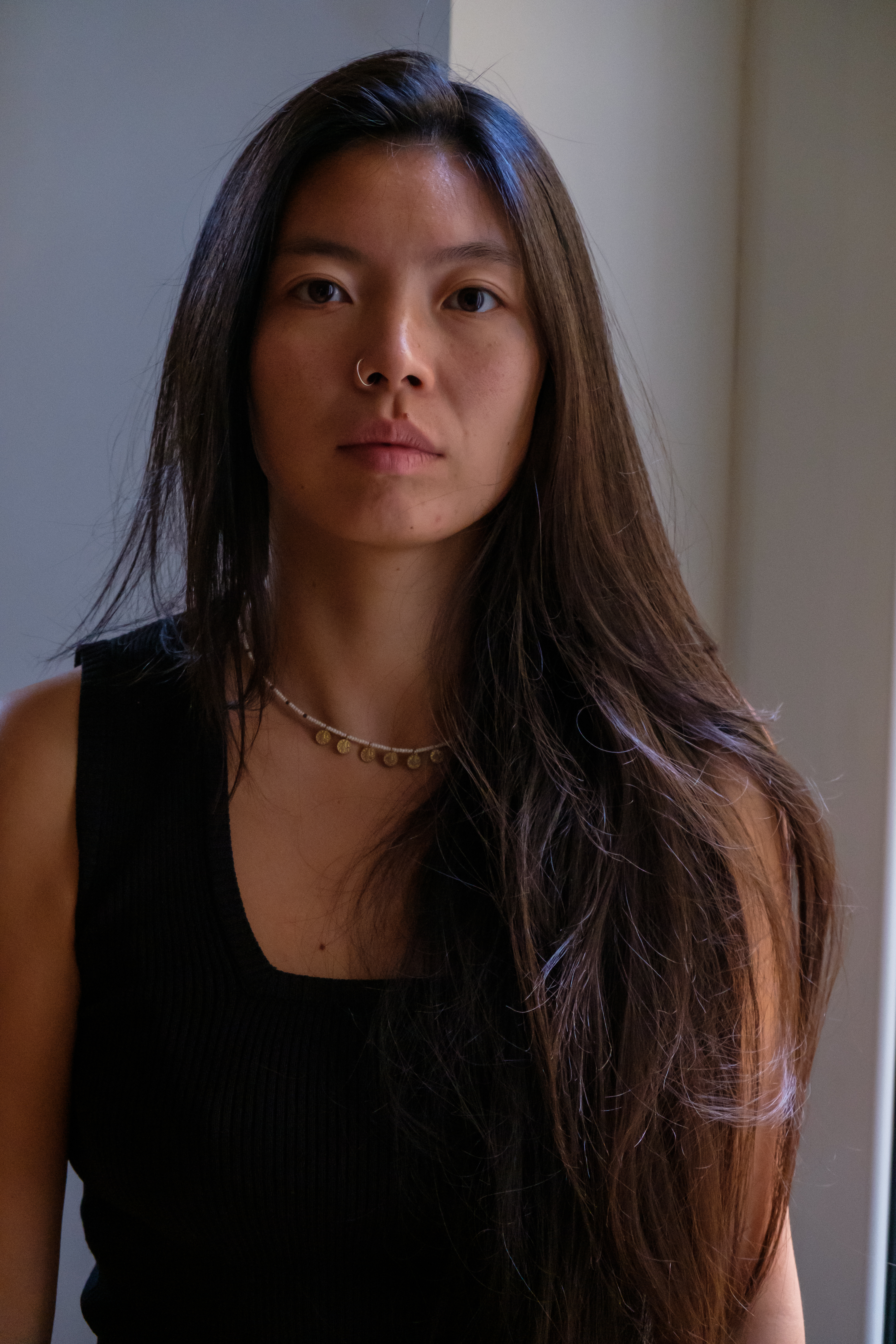
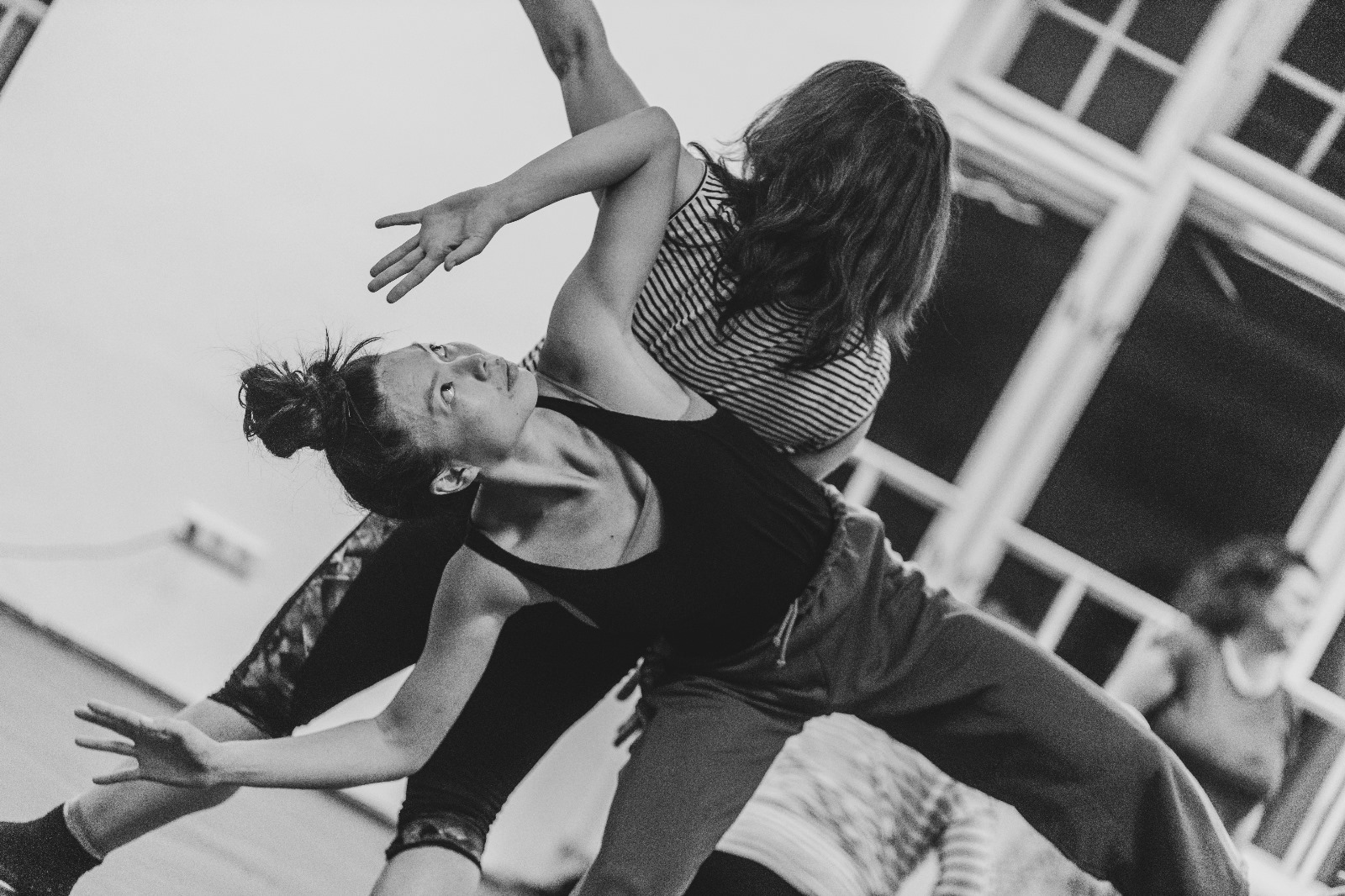
Biography
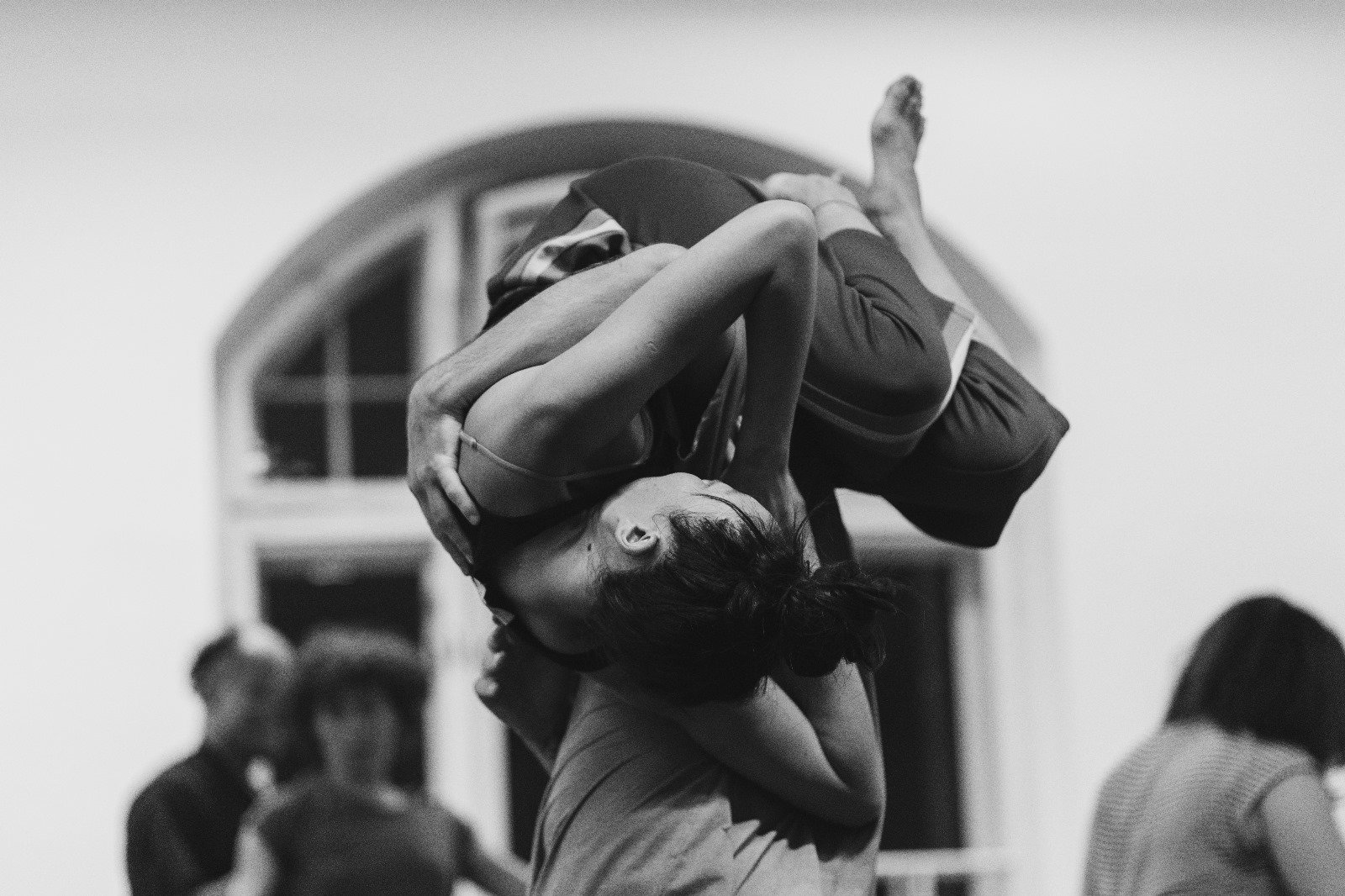
Born to a fusion of Chinese and Italian heritage, Valeria began her (inner and outer) world exploration at the age of 19, driven by a deep curiosity for wonder and truth. Her travels across Africa, Asia, and South America led her to encounter Contact Improvisation (CI) in Brazil, where she quickly fell in love with the practice. CI became not only her home but also her life school, serving as a tangible vehicle for accessing states of flow and grace, and as a radical practice of presence and awareness.
Since 2016, she has been studying Contact Improvisation with international teachers, including Nita Little, Karen Nelson, Ray Chung, Anya Cloud, Charlie Morrissey, Martin Keogh, Itay Yatuv, and Kirstie Simson. Her movement practice draws from a wide range of influences, including Butoh dance, martial arts (specifically Kinomichi) and somatic practices. She has a solid background in contemporary dance, with both formal training and a collaborative work with the Dance Ensemble Opera Studio Company in Italy.
Her practice remains ever-evolving, and she increasingly feels the humbling truth of not knowing. The question that stays most alive for her is: what does it mean to be human?
Valeria is also certified in Emotional Energy Release Massage and continues her studies in Traditional Chinese Medicine and Tuina massage. She teaches Contact Improvisation weekly in Genoa and organizes CI events in Italy, such as Jamazo and 4Elements-Contact Improvisation Retreat in Nature.
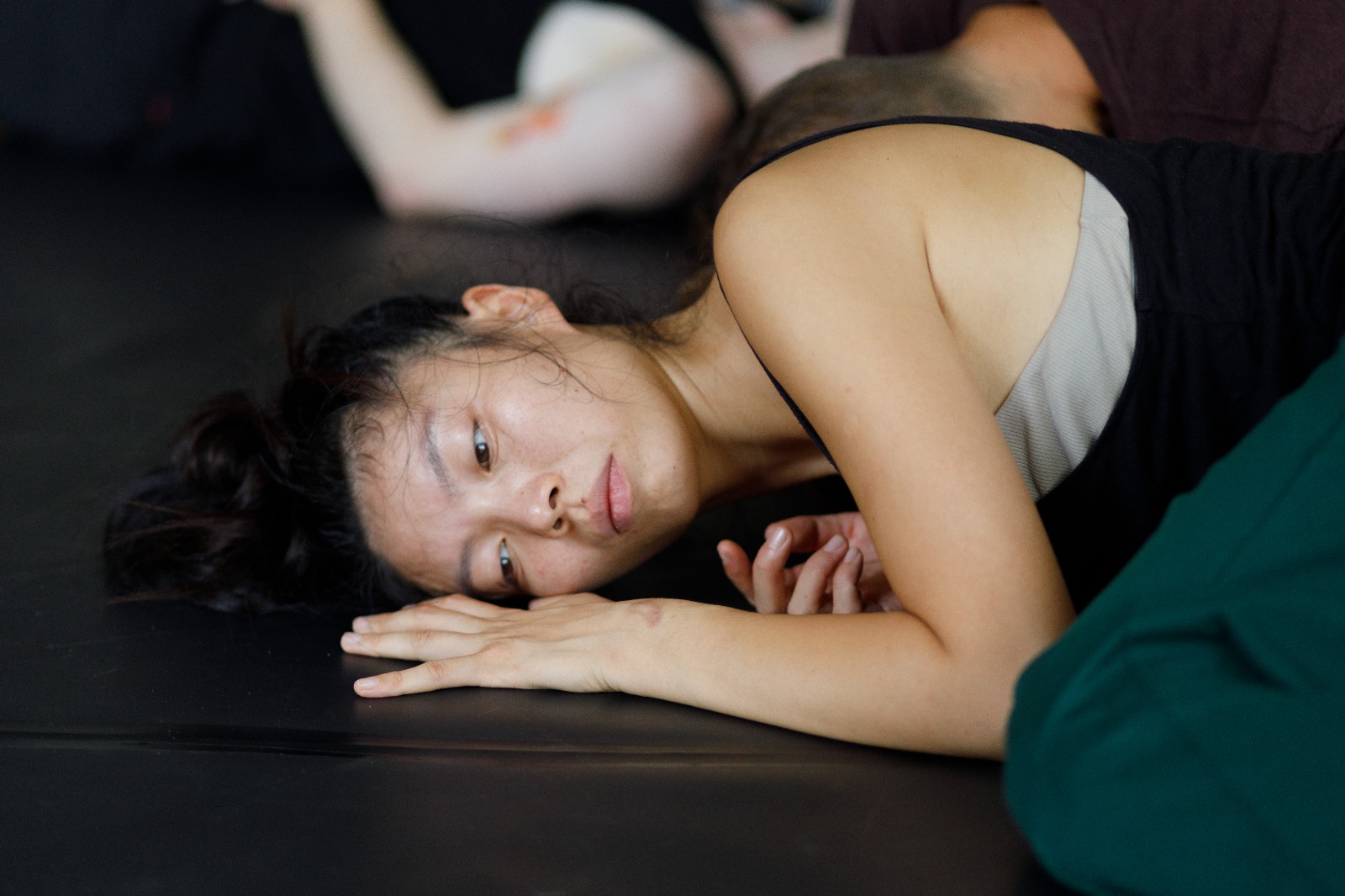
Serhii Semichev (Italy/Ukraine)
The illusion of balance
The class will be of interest to participants with any experience.
The class is dedicated to balance, losing and finding balance and counterbalance.
We will find balance in any position with minimal use of muscle effort. We will explore how changing the position of different parts of the body changes the position of the body's center of gravity and loss of balance.
We will explore how the body organizes itself without unnecessary muscle effort in search of balance when the center of gravity changes position in space.
We will explore how the partner's influence affects the position of the center of gravity in space. We will explore how the body organizes itself to find balance when the partner's influence.
We will explore how the position of the partner's body changes the position of the partners' center of gravity and leads to loss of balance for both partners.
We will explore how our bodies organize themselves in contact when losing and finding balance. We will explore the intensity and range of movement in losing and finding balance together with a partner.
We will explore how joint loss of balance and organization of the body to find balance in contact without unnecessary muscle effort can become a game and one of the resources of movement in dance.
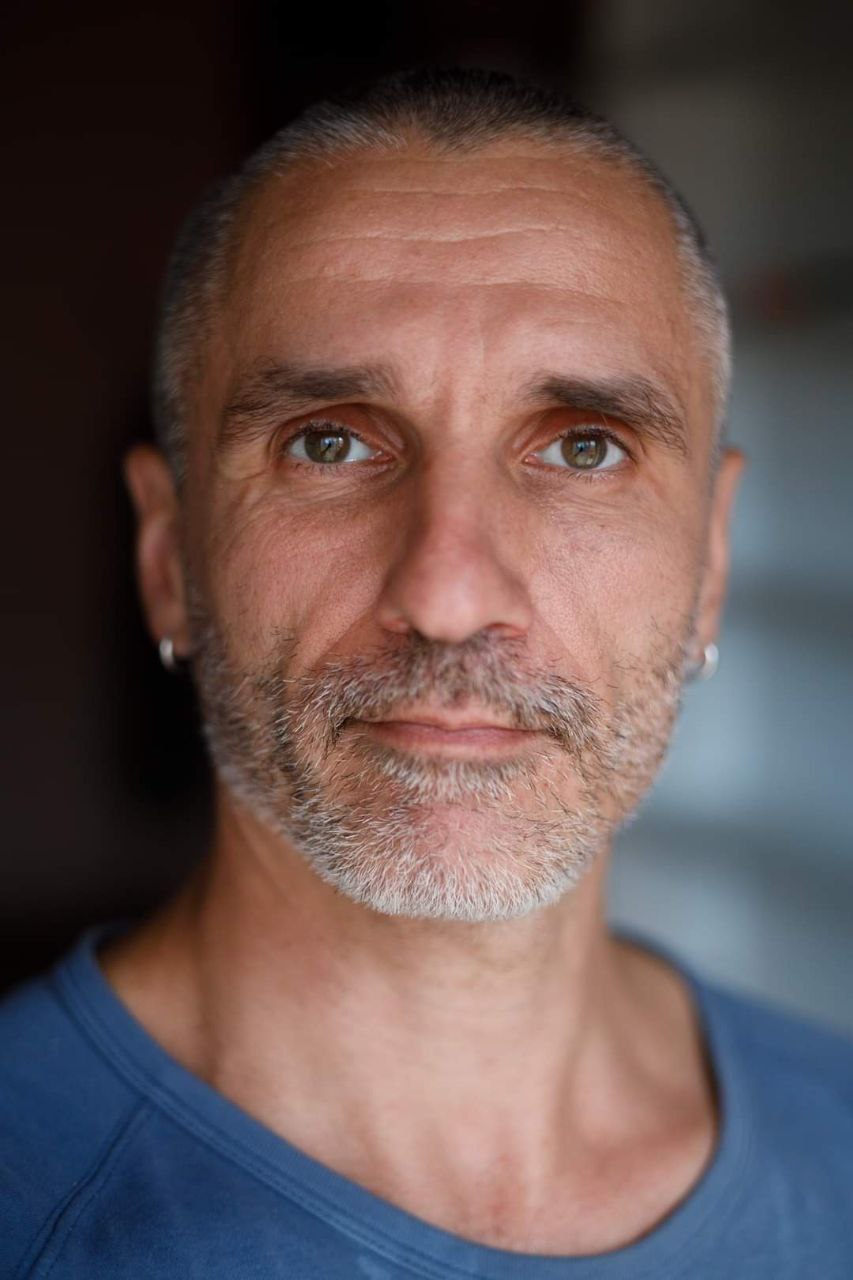
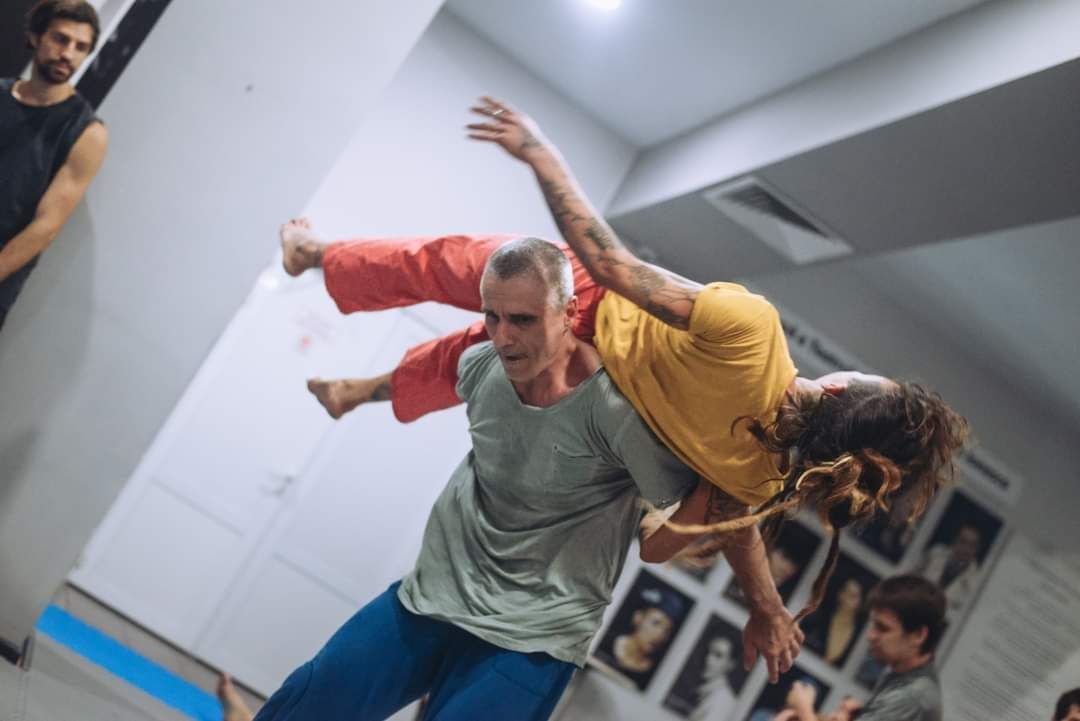
Biography
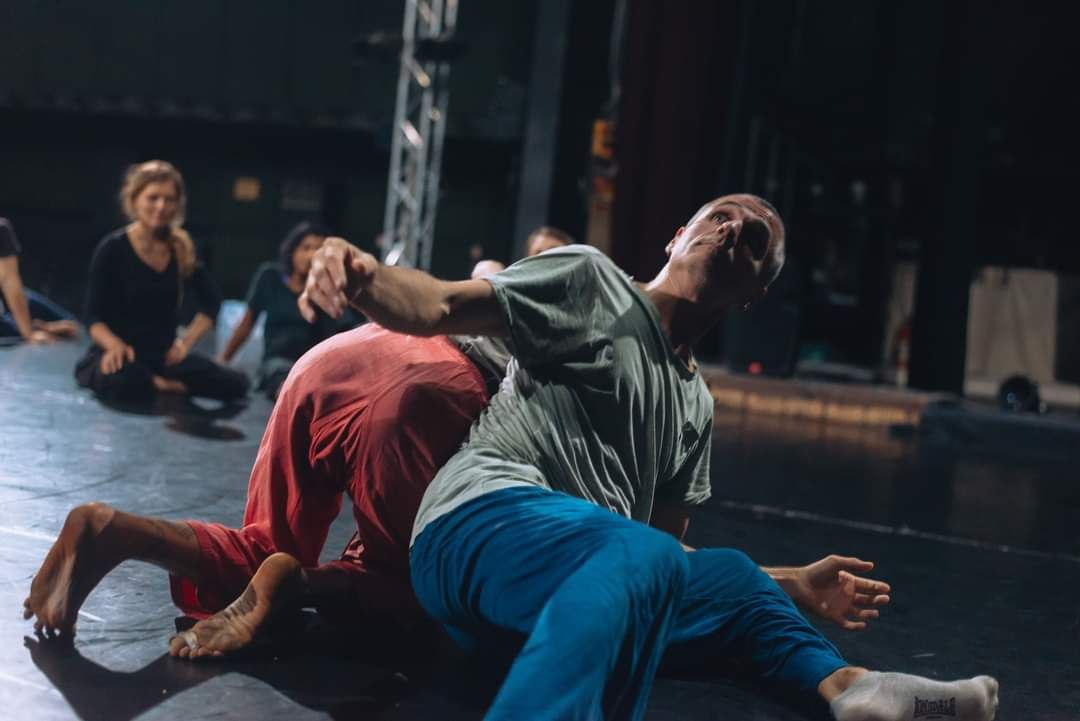
Teacher, dancer performer and researcher of contact improvisation. Teacher and activist of the contact improvisation community in Ukraine. Organizer and co-organizer of contact improvisation festivals in Ukraine. Teacher of contact improvisation in Europe and at European contact improvisation festivals. Teacher and organizer of regular classes and jams in Rome (Italy).
In the past, a gymnast, acrobat, fitness trainer.
Massage therapist, physiotherapist, photographer and videographer.
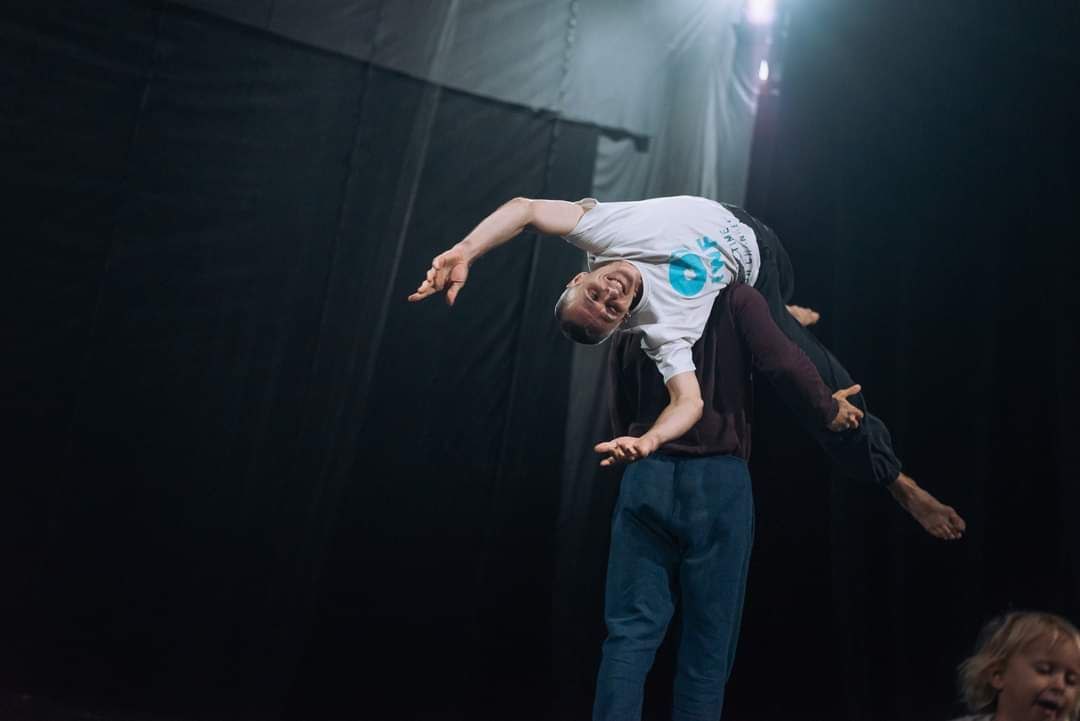
Ingrid Hörlezeder
"Diving deep and flying high"
How would it be, to always feel your center? To simply “know” your position in space? To feel light, safe, and balanced on the tip of the shoulder of your dance partner? All Limps in a “perfect” position to fly.
If your body is well organized, you don´t have to think while dancing, your body will find the easiest, most delightful shape.
In this class we will use ideas from body mind centering© and the trager® approach to clarify the inner connectivity of our bodies and to get ready for high flying moves.
There will be time to deeply relax and to visit our unconscious mind, as well as time to play and to explore.
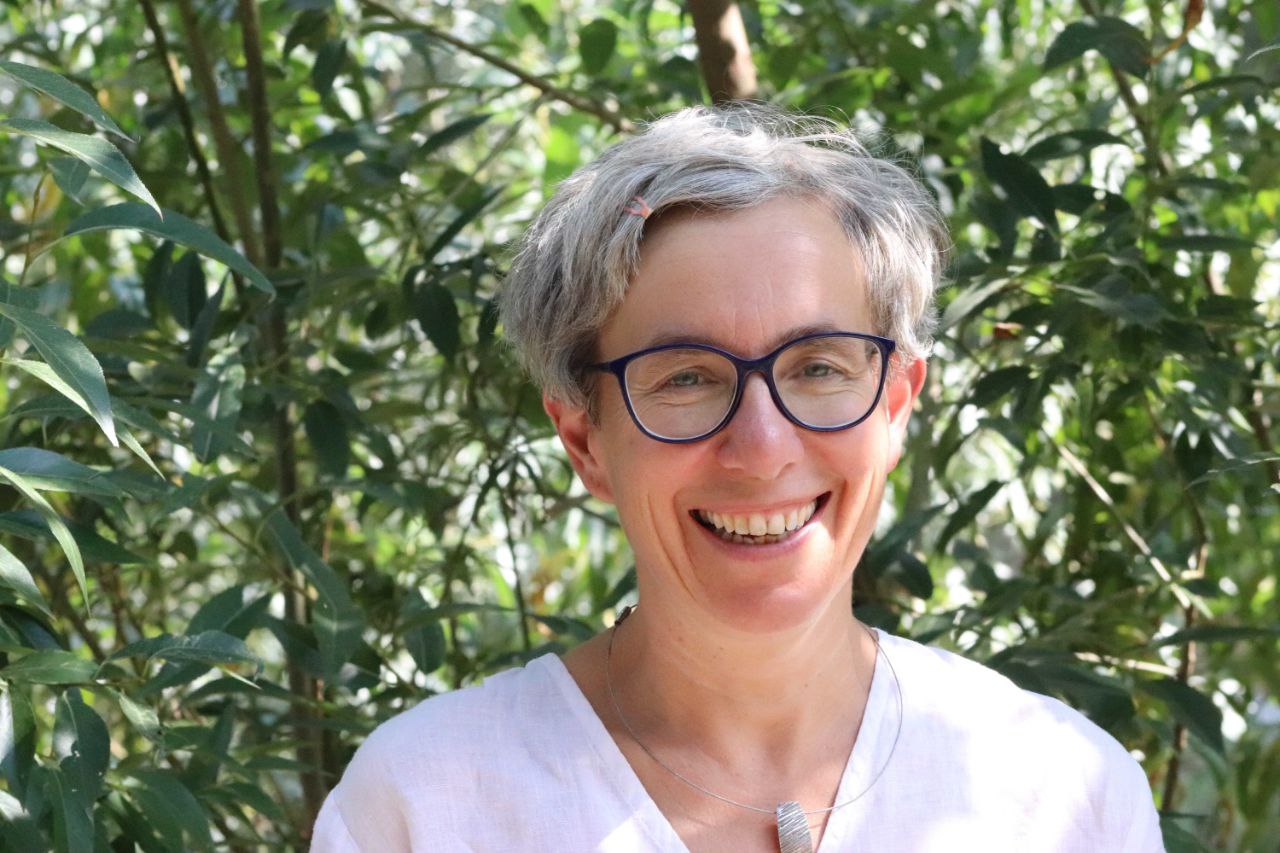
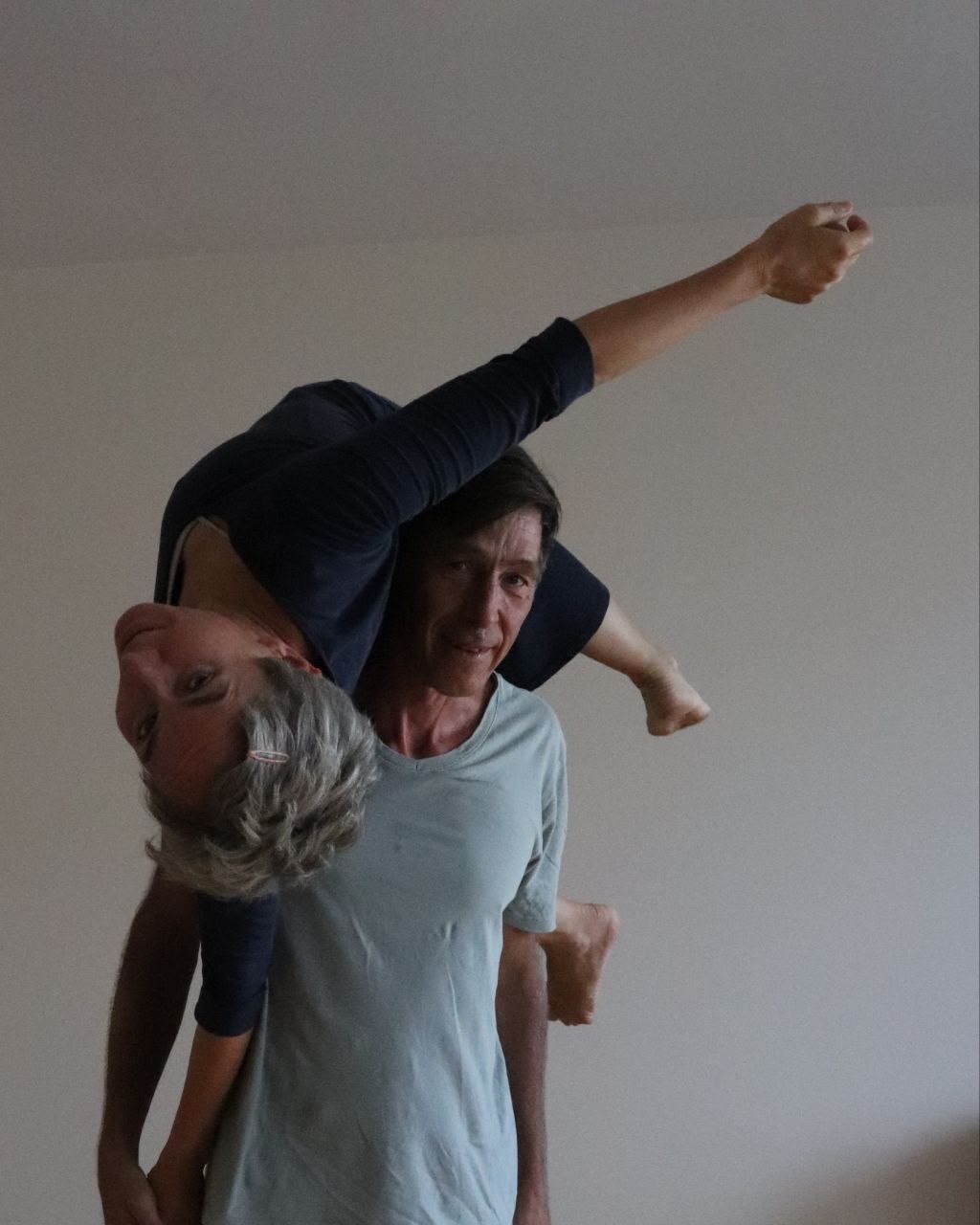
Biography
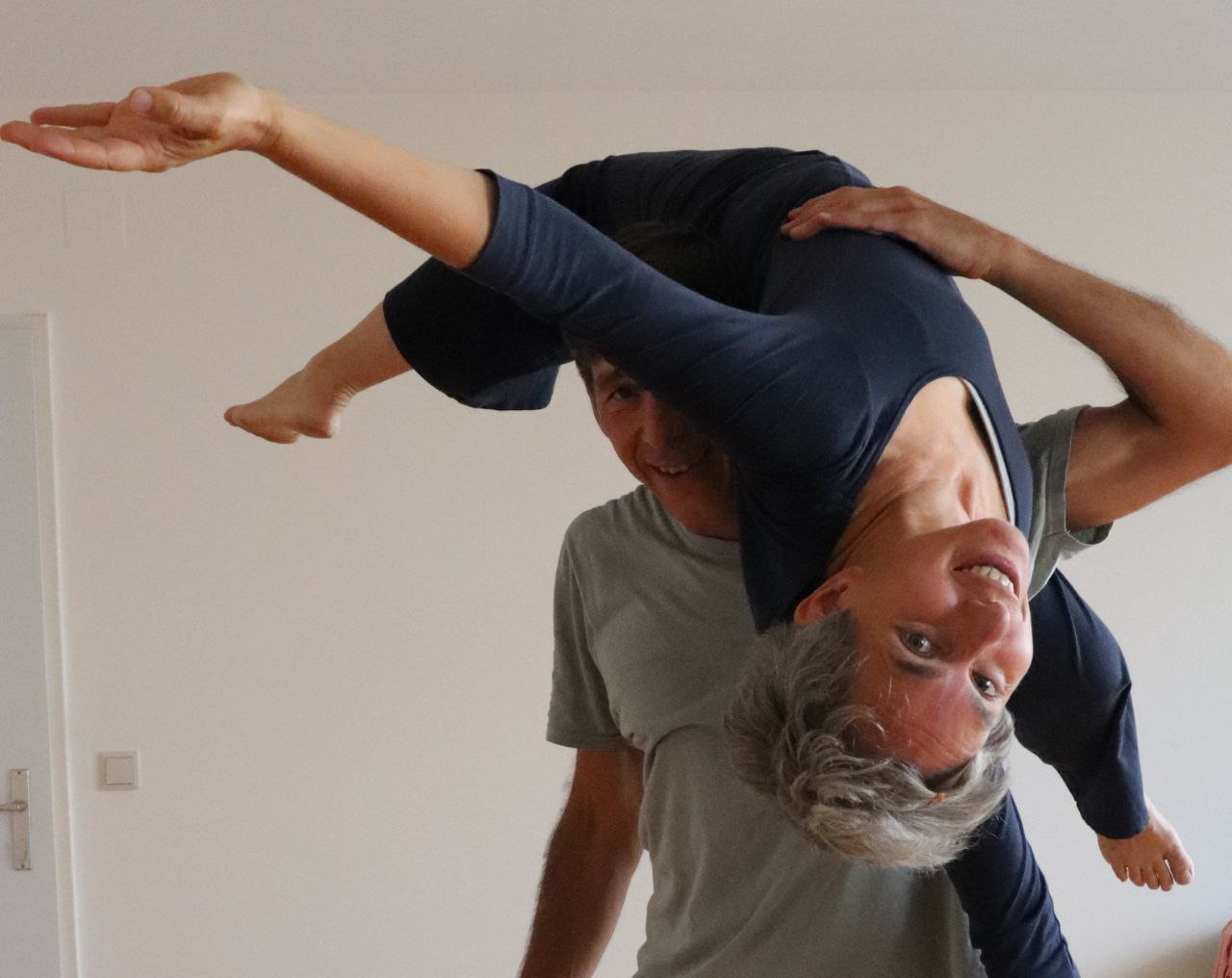
Dancing CI is part of Ingrids Life. She started to discover CI in 1990 and became enthusiastic about it. After taking as many classes as possible in Austria, she moved to the bay area in summer 1996, where she graduated from moving on center in summer 1997 after a year of dancing CI nearly daily. On her last day in San Francisco Scott Wells told her “go back to Vienna and start teaching CI” - that’s what she did.
In 2006 she was organizing ECITE in Austria – the only CI teachers exchange, which has ever happened in Austria.
While raising her kids she became a TRAGER® practitioner in 2007 which enables her to dance in a light and clear way and to feel safe and balanced in all positions.
